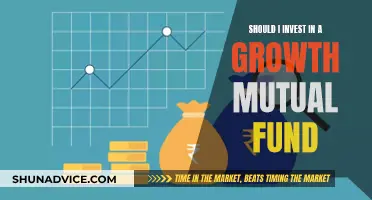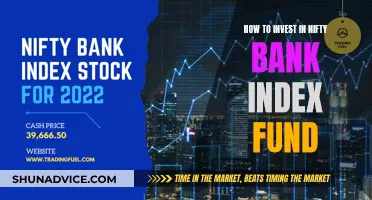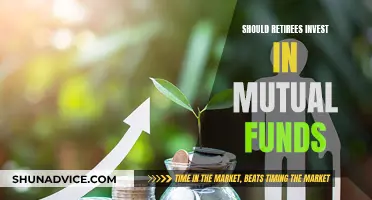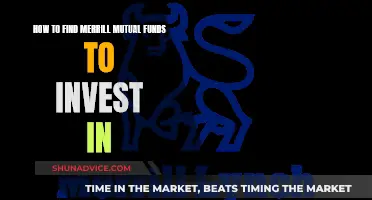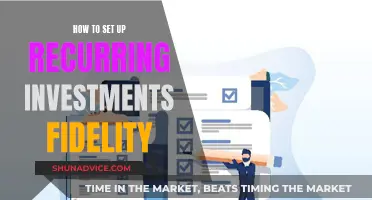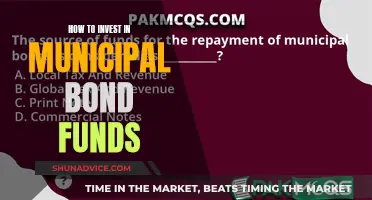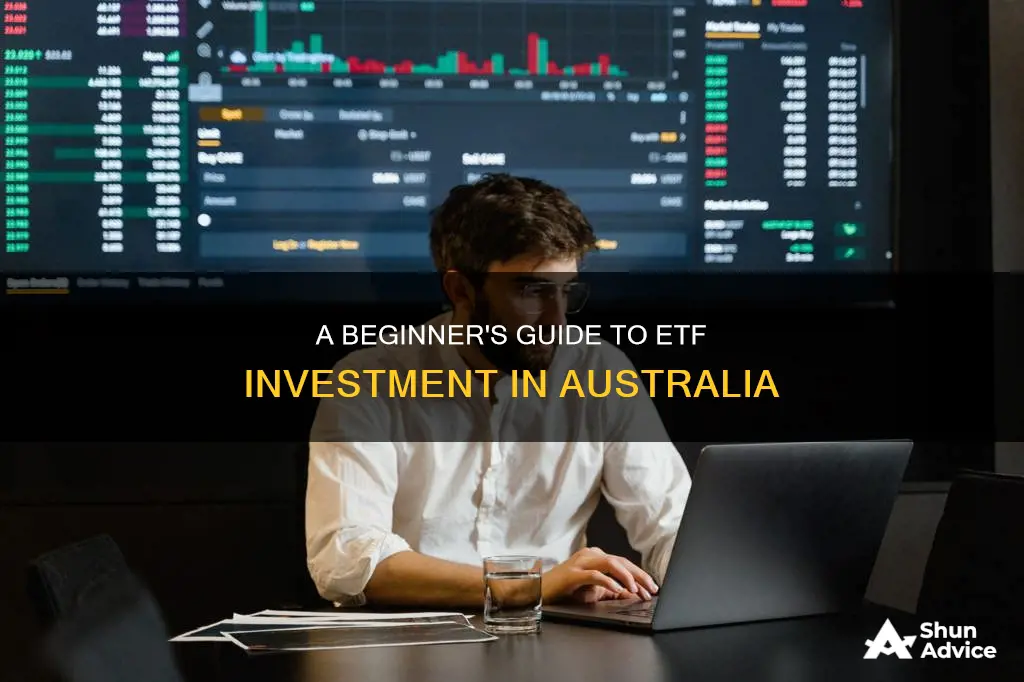
Exchange-traded funds (ETFs) are a low-cost way to invest in a wide range of assets, including stocks, bonds, property, gold, oil, and more. In Australia, ETFs can be bought and sold via online or full-service brokers, or through a financial advisor. Before investing, it's important to do your research and understand the different types of ETFs, their risks, and how they align with your financial goals.
What You'll Learn

Choosing an ETF trading platform
ETFs are traded on the stock market in the same way that stocks are, so to access them, you'll need to sign up for a share trading platform or investment app. The first step is to choose the right platform for your ETF strategy.
For example, if you're an investor who prefers to invest once or twice a year or less into your ETF, it makes sense to find a platform that doesn't charge any monthly or ongoing fees. On the other hand, if you want to invest small amounts regularly, you may prefer to sign up with a platform that charges a low trading (brokerage) fee. Some ETF brokers will charge $0 brokerage fees and instead charge a monthly fee.
Micro-investment or robo-advice platforms such as Raiz Invest or Spaceship are also options. These typically allow you to invest in a portfolio of multiple ETFs based on your risk profile, and you can usually set up an automated investment option where you choose how much and how often you invest.
The lower the fees, the better, but it is important to match your platform with your needs. Make the most of introductory offers—competition is fierce among low-cost brokers, so there are plenty of sign-up bonuses available.
ETFs are bought and sold just like regular stocks, so you'll need to sign up with an online broker to start investing in ETFs.
There are two types of brokers: online brokers and full-service brokers. Online brokers, such as Commsec, Nabtrade, Westpac Online Investing, and ANZ Share Investing, buy and sell ETFs on your behalf when you provide instructions via an online platform or website. They typically do not offer investment recommendations or a personalised service, so they charge a lower fee than full-service brokers.
Full-service brokers buy and sell ETFs on your behalf and offer a personalised service, which can sometimes include investment recommendations tailored to your circumstances and needs. This type of broker essentially becomes an adviser to you and is typically available to talk to on the phone or meet with you face-to-face. This higher level of service typically comes with higher fees.
Invest in Precious Metals Mutual Funds: Diversify Your Portfolio
You may want to see also

Creating an account
To start investing in ETFs in Australia, you'll need to open a brokerage account. This is an account you can use to purchase and hold investments, including ETFs and other assets listed on exchanges, such as stocks.
There are two types of brokers: online brokers and full-service brokers. Online brokers are often the best option for new traders, so you should compare online share trading platforms to find one that's right for you. Check each one's brokerage fees, whether they impose inactivity fees, minimum deposit amounts, and what markets they have access to. If you're new to investing, choosing an easy-to-use platform with educational features and financial advice can also be a good option.
- Fees: Look at how they charge for trading or maintenance. Many brokers no longer charge maintenance, administration, or stock trading fees.
- Minimum deposit: Some brokers require a minimum deposit to open an account, although with ETFs, that minimum is generally only the cost of one share.
- Types of assets: Not all brokers allow you to purchase every type of investment, and they may not allow for fee-free trading.
- Customer service: Find out what type of help is offered and how responsive the brokerage is. Check reviews and see how they've been received by the Australian investing community.
- Special features: What other features does the brokerage offer, such as financial advice and planning?
Once you've chosen a broker, you'll need to sign up for an account. It's generally free to sign up, and most platforms let you do so online or via an app. However, you'll need to provide some personal information and documentation, including:
- Your name, address, date of birth, and contact details
- Your tax file number (TFN)
- Bank account details
The sign-up process normally takes a few minutes, but it may take longer for your account to be verified. Remember to beware of inactivity fees, as some platforms charge these if you don't use your account for a certain amount of time.
After you've set up your brokerage account, you'll need to fund it to cover the cost of your ETF purchases. You can then start buying ETFs by searching for them on your trading platform using their name or ticker code.
When buying ETFs, you can choose to purchase either a set number of ETF shares or a total dollar amount. You'll also need to select your order type, either a market order (where you buy at the current price) or a limit order (where you set the price you want to buy at).
Finally, confirm your order. Once you've checked your trade, hit "Buy" or "Confirm" to submit your trade. And that's it—you've bought an ETF!
Private Equity Funds: Impact Investing Strategies Revealed
You may want to see also

Researching the market
Understanding ETFs
ETFs are a type of investment fund that trades on stock exchanges, such as the Australian Securities Exchange (ASX) or Cboe Australia (CXA). They offer a cost-effective way to gain exposure to a diverse range of securities, such as stocks, bonds, commodities, and more. When investing in an ETF, you own units in the fund, and the ETF provider owns the underlying shares or assets.
ETFs can be passively or actively managed. Passively managed ETFs aim to replicate the performance of a specific index or benchmark, such as the S&P/ASX 200 or the S&P 500. Actively managed ETFs, on the other hand, aim to outperform the market and may employ high-risk trading strategies.
Brokerage Accounts and Platforms
To invest in ETFs, you will need to open a brokerage account with an online or full-service broker. Online brokers, such as Commsec, Nabtrade, or Westpac Online Investing, offer a DIY platform to buy and sell ETFs on your behalf through an online platform or website. Full-service brokers provide a more personalised service, sometimes including investment recommendations, and typically charge higher fees.
When choosing a brokerage account, consider factors such as fees, minimum deposit requirements, the range of assets available, and the level of customer service provided. It is also essential to review the brokerage's reputation and responsiveness, ensuring they are well-received by the Australian investing community.
Types of ETFs
There are different types of ETFs available, each offering exposure to various asset classes and investment strategies:
- Passive ETFs: These aim to replicate the performance of a specific index or benchmark and are often considered lower-risk.
- Active ETFs: These aim to outperform the market and may employ high-risk trading strategies. They typically have higher management fees.
- Factor and smart beta ETFs: These combine active and passive strategies, tracking an index while also factoring in additional variables, such as a higher weighting of smaller companies.
- Structured and synthetic ETFs: These ETFs use derivatives to replicate the performance of their underlying assets. They can be complex and riskier than standard index ETFs.
- Commodity ETFs: These track the performance of physical commodities, such as gold, natural resources, or agricultural products.
Fees and Expenses
When researching ETFs, it is crucial to understand the associated fees and expenses. Here are some key costs to consider:
- Management fees or expense ratios: Charged by the ETF issuer, these fees are typically included in the unit price.
- Brokerage fees: Incurred when buying or selling ETF units, these fees vary depending on the online broker.
- Buy/sell spread: The difference between the highest price you're willing to pay and the lowest price a seller is willing to accept.
- Dividends: Some ETFs pay dividends if the underlying company stocks pay dividends and the fund manager chooses to pass them on. Check the product disclosure statement for details.
Due Diligence
Conducting thorough due diligence is essential before investing in ETFs. Review the product disclosure statement (PDS) to understand the ETF's investment objectives, risks, and other relevant information. Compare the ETF's price on the exchange (ASX or CXA) with its net asset value (NAV) or indicative net asset value (iNAV) to assess if it is fairly priced.
Additionally, consider the ETF's performance against the wider market and ensure that it remains aligned with your overall investment goals and risk tolerance. Remember that investing carries inherent risks, and it is crucial to understand your risk tolerance and time horizon before investing.
International Company Funds: Where to Invest Your Money
You may want to see also

Buying the ETF
Once you've chosen a trading platform or broker, you'll need to create an account. You'll need to provide some personal information and documentation during the sign-up process, including your name, address, date of birth, contact details, tax file number, and bank account details.
It's generally free to sign up, and most platforms let you sign up online or via an app. However, it may take longer for your account to be verified. Beware of inactivity fees charged by some platforms if you don't use your account for a certain amount of time.
After setting up your account, it's time to buy the ETF. You can do so by following these general steps:
- Fund your account (if you haven't already done so). Ensure you've deposited enough funds to cover the cost of your ETF purchase.
- Search for the ETF on your trading platform using the ETF's name or ticker code.
- Select the amount you want to buy. You can choose to purchase either a set number of ETF shares or a total dollar amount.
- Select your order type. You'll normally have the choice of a market order (where you buy at the current price) or a limit order (where you set the price you want to buy at).
- Complete the order. Once you've checked your trade, submit your trade by hitting "Buy" or "Confirm".
Tips for Buying an ETF
- Timing your trades: To get an ETF price that is more likely to represent its underlying value, place your trades at least 30 minutes after the market opens. It's also better to buy or sell ETFs when the market for the underlying asset is open. For example, if you're buying or selling an ETF that tracks Asian shares, place your orders when the Asian stock markets are open.
- Comparing prices: You can check if an ETF is fairly priced by comparing its price on the Australian Securities Exchange (ASX) or Cboe Australia (CXA) with the net asset value (NAV) or the indicative or intraday NAV (iNAV). The NAV is calculated by taking the assets of the fund, subtracting the liabilities, and dividing this by the number of units in the fund at the end of the day. The iNAV is a real-time estimate of the NAV, published during the day.
- Understanding the risks: While ETFs are a relatively low-risk form of investing, there is still a variety of risks associated with different types of ETFs. For example, synthetic ETFs, which try to replicate the performance of their underlying assets through derivatives, can be much riskier than standard index ETFs.
- Tracking performance: ETFs are typically long-term investments, but it's important to track their performance against the wider market. If you feel your ETF is underperforming or no longer matches your investing strategy, consider looking elsewhere.
- Tax obligations: Remember to consider the tax implications when selling your ETF for a profit. You'll likely need to pay capital gains taxes on any returns you make.
Mutual Funds vs Annuities: Where Should You Invest?
You may want to see also

Tracking the ETF's performance
Tracking the performance of your Exchange-Traded Funds (ETFs) is crucial. Here are some ways to monitor the performance of your ETFs:
Compare with other ETFs
Use resources like Globefund or Morningstar to see how your ETF is performing relative to other similar funds. This will give you a good understanding of how your investment is doing in comparison to its peers.
Compare with its benchmark
Most passive ETFs track a specific benchmark, such as the S&P 500 Index. However, ETFs might deviate from their benchmark, especially when demand drives their share prices up or down, resulting in a "tracking error". You can use these benchmarks to monitor the performance of your ETFs and ensure they are meeting your financial goals.
Review account statements
Regularly review your account statements to understand how your investments are performing and to keep track of the costs you are paying. Compare the performance of your investment portfolio against your investment goals and guidelines.
Consult an advisor
If you have an advisor, they can provide valuable insights into the performance of your ETFs. They can explain any sudden fluctuations in the price of your ETFs and advise on how these changes impact your portfolio.
Understand tracking difference and tracking error
Tracking difference is the discrepancy between an ETF's performance and its index performance. It is a metric used to assess whether investors are getting what they pay for. Tracking error, on the other hand, focuses on the volatility in the difference of performance between the fund and its index. Understanding these metrics will help you evaluate the efficiency of your ETFs.
Use online tools
Online platforms such as Sharesight, Morningstar, and Yahoo!Finance provide tools to help you monitor your ETF performance. These sites allow you to input your unique holdings and their cost basis, enabling you to track and compare their performance over time.
Investing in Dementia Discovery: A Guide to the Dementia Discovery Fund
You may want to see also


